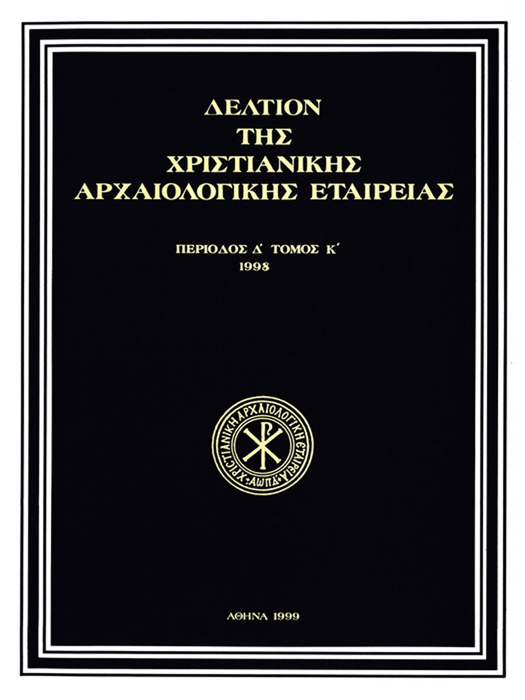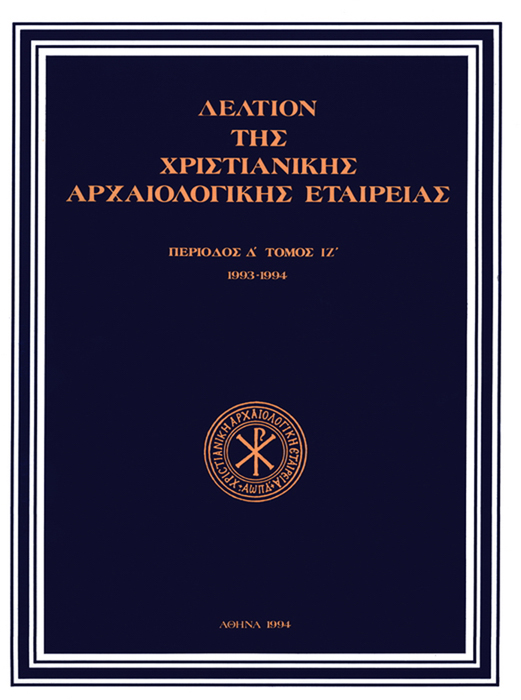Αυτοκράτορας, ευσέβεια και άφεση των αμαρτιών σε δύο βυζαντινές εκφράσεις. Εικόνα και ρητορική

Περίληψη
Απεικονίσεις βυζαντινών αυτοκρατόρων σε στιγμές προσωπικής ευλάβειας κατά τις οποίες οι ίδιοι ως θνητοί μετέχουν της δέησης προς το θείο δεν έχουν σωθεί στην μνημειακή τέχνη. Ωστόσο, έχουν αποθησαυριστεί σε δύο Εκφράσεις που μνημονεύουν τα χαμένα αυτά έργα. Η πρώτη βρίσκεται σε τέσσερα επιγράμματα του Ιωάννη Μαυρόποδος και αφορά μάλλον σε επιτύμβια παράσταση με τον Κωνσταντίνο τον Μονονομάχο δεόμενο προς το τρίμορφο της Δέησης. Η δεύτερη αφορά την παράσταση Δευτέρας Παρουσίας την οποία περιγράφει ο Νικόλαος Καλλικλής και στην οποία είχε συμπεριληφθεί η μορφή του αυτοκράτορα Αλεξίου Α΄ Κομνηνού. Ειδικότερα, διερευνώνται οι συνθήκες κάτω από τις οποίες μπορούν δύο αυτοκράτορες να απεικονιστούν σε τέτοια εικαστικά περιβάλλοντα. Η αναφορά σε σωζόμενες μικρογραφικές απεικονίσεις άλλων μορφών ως συγκριτικό υλικό παρέχει το πλαίσιο και δίνει το καλλιτεχνικό μέτρο της πιθανής μορφής που θα είχαν οι απεικονίσεις αυτές.
Λεπτομέρειες άρθρου
- Πώς να δημιουργήσετε Αναφορές
-
KEPETZI, V. (1999). Αυτοκράτορας, ευσέβεια και άφεση των αμαρτιών σε δύο βυζαντινές εκφράσεις. Εικόνα και ρητορική. Δελτίον της Χριστιανικής Αρχαιολογικής Εταιρείας, 20, 231–244. https://doi.org/10.12681/dchae.1210
- Ενότητα
- Άρθρα
Οι συγγραφείς των άρθρων που δημοσιεύονται στο Δελτίον της Χριστιανικής Αρχαιολογικής Εταιρείας (εφεξής Δελτίον) διατηρούν τα δικαιώματα πνευματικής ιδιοκτησίας επί των άρθρων τους, αναγνωρίζοντας στο περιοδικό το δικαίωμα της πρώτης δημοσίευσης και στο ΕΙΕ/ ΕΚΤ το δικαιώμα να φιλοξενεί και να διαθέτει το περιεχόμενο των άρθρων στις πληροφοριακές υποδομές του σύμφωνα με τον παρόντα κανονισμό Άρθρα που δημοσιεύονται στο Δελτίον και στις πληροφοριακές υποδομές του ΕΙΕ/ ΕΚΤ μπορούν να χρησιμοποιούνται ελεύθερα με αναφορά στο συγγραφέα και στην πρώτη δημοσίευση για μη κερδοσκοπικούς σκοπούς με υποχρέωση παρόμοιας διανομής. Η Χριστιανική Αρχαιολογική Εταιρεία και το ΕΙΕ/ ΕΚΤ διατηρεί το δικαίωμα να δημοσιεύει, να αναπαραγάγει, να παρουσιάζει στο κοινό, να διανέμει και χρησιμοποιεί άρθρα που δημοσιεύονται στο Δελτίον σε οποιοδήποτε μέσο και μορφή είτε μεμονωμένα είτε ως μέρη συλλογικών έργων, για όλο το χρόνο διάρκειας προστασίας της πνευματικής ιδιοκτησίας και για όλες τις χώρες του κόσμου. Αυτό περιλαμβάνει ενδεικτικά και όχι αποκλειστικά, το δικαίωμα δημοσίευσης των άρθρων σε τεύχη του περιοδικού Δελτίον, αναπαραγωγής και διανομής μεμονωμένων αντιγράφων των άρθρων, αναπαραγωγής ολοκλήρων των άρθρων σε άλλη έκδοση της Χριστιανικής Αρχαιολογικής Εταιρείας, και αναπαραγωγής και διανομής των άρθρων ή περίληψης αυτών με χρήση πληροφορικού συστήματος αποθετηρίου του ΕΙΕ/ ΕΚΤ.



